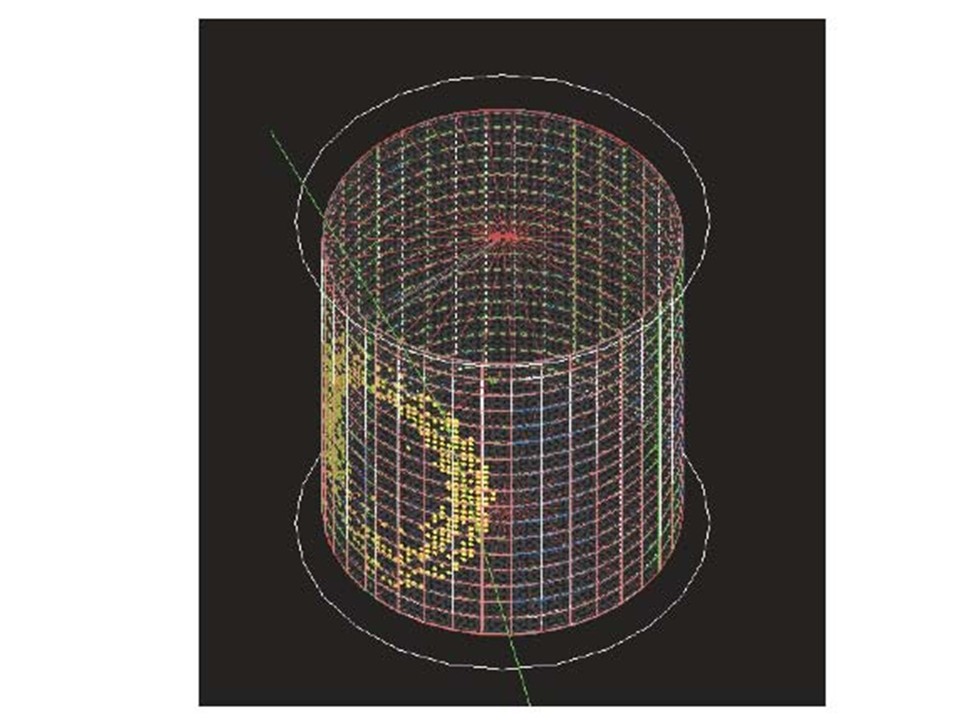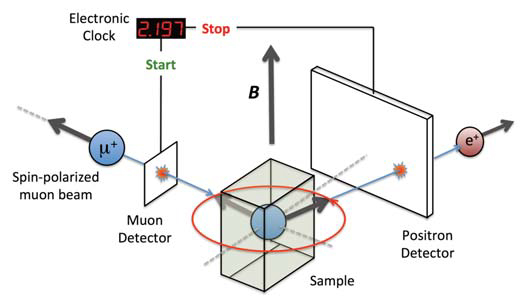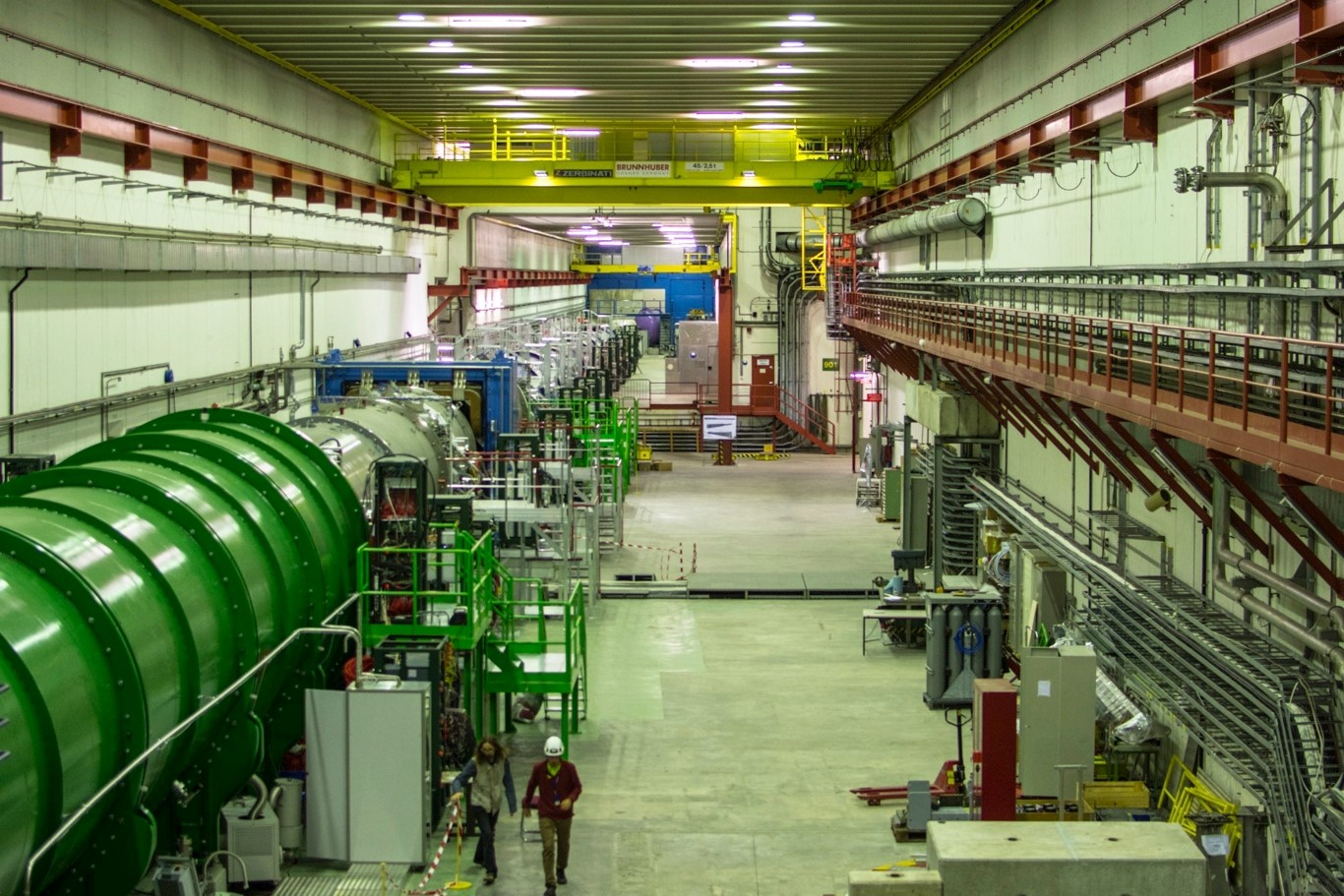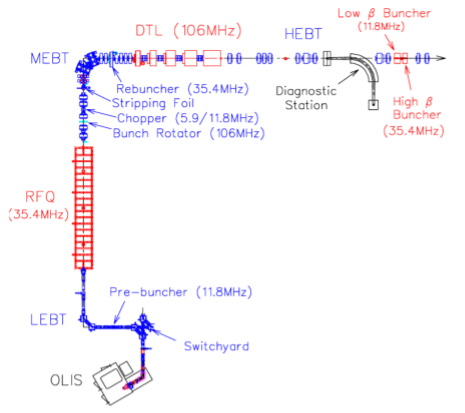Pilot Projects
TRIUMF has established a program in Data Science and Quantum Computing in order to enchance it's scientific impact, utilizing it's national network, international collaborations and industry contacts. Several pilot projects, where applications of Machine Learning could have a major impact have been identified to kick start this activity.
Event Reconstruction in Water Cherenkov Detectors for the Hyper-Kamiokande Project | |
The Hyper-Kamiokande experiment is set to begin operations in the middle of next decade. One of the major science goals of this experiment is to measure the CP violating phase in the neutrino sector. Precise knowledge of this parameter can tell us if neutrinos are responsible for the matter-antimatter asymmetry observed in the Universe. One of the major systematic uncertainties limiting this measurement stems from the unknown rate of neutrino interactions producing gamma backgrounds to the main electron neutrino signal. The goal of this project is to develop deep learning techniques for particle identification and multi-ring event reconstruction in a water Cherenkov detector. It will focus on simulations of Hyper-K detectors including NuPRISM - a major TRIUMF initiative. The project will explore accepted supervised training methods in conjunction with semi-supervised and unsupervised methods such as Variational Autoencoders (VAEs) to enable training directly from data and with limited labeled datasets as well as synthetic data generation. In addition quantum computing and particularly quantum annealing can help us to further train our models from data and to generate synthetic samples - this has broad implications beyond this pilot project itself. |
hyper-K event display Image credit:http://www.hyper-k.org/en/news/news-20170330.html
|
Automatic data analysis for μSR at Center for Molecular & Materials Science (CMMS) | |
At CMMS muon spin relaxation and beta-NMR measurements are carried out in order to experimentally evaluate the spin relaxation phenomena in matter. Currently, the experimentalists empirically find the appropriate fitting function to analyze the data. The goal of this project is to establish an automated analysis system, utilizing statistical and machine learning techniques, to help experimentalists studying their material samples and relate the spectrum features to the appropriate theoretical models. Project will use the accumulated data sets from the last 30 years of CMMS activities. |
μSR diagram Image credit:https://fiveyearplan.triumf.ca/teams-tools/%CE%BCsr/ |
No-Core Shell Model extrapolation using Gaussian Processes | |
The No-Core Shell Model (NCSM) treats nuclei as systems of non-relativistic point-like nucleons interacting through realistic inter-nucleon interactions. The many-body wave function is cast into an expansion over harmonic-oscillator (HO) basis states containing up to Nmax harmonic oscillator excitations above the lowest Pauli-principle-allowed configuration. Such formulation of the problem allows for first-principles calculation of properties of interest such as the nuclear binding energy. In principle the exact result is obtained as Nmax tends to infinity. In practice for the nuclei under consideration the calculation is expected to converge for Nmax of around 20, however world’s largest supercomputers allow for performing calculations with Nmax<16 in practical timescales, hence an effective extrapolation method is needed. Since the properties of the binding energy calculation are known, but not the exact functional form of the binding energy as a function of Nmax, we attempt to extrapolate the binding energy calculation using Gaussian Processes (GP). The generic GP Regression is unlikely to be informative as we lack data over a large region in Nmax, however by imposing constraints on the first and second derivative of the function we hope to obtain an estimate of binding energy with well understood uncertainty at high Nmax.
|
Ab-initio calculation of Helium binding energy Image credit: Physical Review C 97, 034314 (2018) |
Particle identification in NA62 experiment | |
The NA62 experiment at CERN aims to measure extremely rare particle decays and, through comparison with precise calculations, potentially make discoveries of new fundamental physics processes including new particles and new forces of nature. To achieve this goal NA62 must carefully identify the types of particles (e.g. electrons, muons, and pions) present in the reactions with extremely high accuracy. The goal for suppression of muons and electrons with respect to pions is one in ten billion with efficiency of pion selection of 90%. A method to achieve this is based on using multiple detector arrays including the Liquid Krypton (LKr) calorimeter, muon calorimeters ,and the Ring imaging Cherenkov detector (RICH). The aim of this project is to improve suppression from the LKr and muon systems by an order of magnitude to one in a million ; additional suppression is available from other detector systems. The method will combine 2D image-like data from the LKr calorimeter and the muon calorimeters as well as using other high level event properties. |
Photo of the NA62 detector Image credit: https://na62.web.cern.ch/na62/ |
Beam transport tuning and prognostics for TRIUMF accelerator | |
The TRIUMF Isotope Separator and Accelerator (ISAC) I is a post-accelerator delivering isotope beams to various nuclear physics experiments. To deliver beams of desired intensity and quality to the experiments multiple parameters of the ISAC-I accelerator need to be tuned during a lengthy, manual procedure. While the beam transport is in principle inherently tractable problem, in practice describing the accelerator complex in sufficient detail for reliable simulation is a prohibitively time-consuming undertaking. We attempt to design a system for automatized tuning of the accelerator based on historic and on-line data. The accelerator is supported by vast array of devices such as power supplies, turbopumps etc. Failures of these devices cause undesirable stoppages in beam delivery. We aim to develop a tool for suggesting maintenance of devices based on the diagnostic data they produce, utilizing the historical data available.
|
Diagram of ISAC I accelerator Image credit: Olivier Shelbaya |
Events
- Machine Learning for Water Cherenkov Detectors Workshop, University of Victoria, April 15-17
- Machine Learning Lectures and tutorials at TRISEP 2019, TRIUMF July 22-August 2
- Data Science and Quantum Computing Workshop at TRIUMF Science Week August 23
Resources
- Contact: Wojtek Fedorko (wfedorko at triumf.ca), Olivia di Matteo (odimatteo at triumf.ca)
- Machine Learning Resources (internal)




